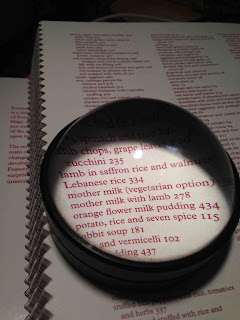Your first sip of Fernet Branca, an Italian liqueur,
will be akin to waking up in a foreign country
and finding a crowd of people arguing in agitated, thorny voices
outside your hotel window.
It’s an event that’s at once alarming and slightly thrilling,
and leaves you wanting to know more.
~ Wayne Curtis
The last time I traveled to Portland, we ate and drank for five solid days. It was, as I've mentioned, glorious. We ate from food trucks, from restaurants, in breweries, at picnic tables — wherever and whenever we spied something that looked good. And, man, it all looked good. To catch our breath, we dropped by bars — sometimes just to shoot a few games of pool, but often to visit a particular bartender. And so I dragged my crew to Clyde Common in the ground floor of the Ace Hotel where bar manager Jeffrey Morgenthaler slakes the thirst of travelers, locals, cocktail enthusiasts, and the occasional insufferable cocktail snob who may get pawned off on a visiting writer.
Fortunately, Morgenthaler isn't such a snob; he's a down to earth, genuinely nice guy who does smart things with drinks. I've got an awful lot of whiskey at home, so, despite the large board bearing an impressive list of supple bourbons and spry ryes, I opted for something tropical after our initial round of Negronis. Bar man Junior Ryan set me up with one of Morgenthaler's concoctions: the Kingston Club cocktail, a peach-colored, lightly fizzy drink based on Drambuie and laced with Fernet, the bitter Italian amaro I once heard a wag call "bartenders' Jagermeister."
A small quantity of Fernet in a tropical drink is unusual, but isn't much of a stretch. After all, tiki bartenders have long used the similarly bitter absinthe-like Herbsaint and Pernod to craft an ethereal, can't-quite-put-my-finger-on-it taste. For you thespians, think of it as the crowd on stage, constantly mumbling "peas and carrots, peas and carrots," helping to set a mood, but not stealing attention from the leads. Drambuie, on the other hand, is a surprise. Best known for starring in the classic Rusty Nail, the Scotch-based liqueur usually plays, at best, a walk-on role in the tiki scene. I'm glad it walked on here.
Kingston Club
1.5 oz Drambie
1.5 oz pineapple juice
.75 oz lime juice
1 tsp Fernet Branca
3 dashes Angostura bitters
Shake, top with 1 oz soda water, strain over fresh ice in a collins glass. Garnish with a large orange twist.
Goes well with:
- A visit to Clyde Common (1014 SW Stark Street, Portland, Oregon)
- Wayne Curtis' piece for The Atlantic on Fernet.
- Morgenthaler doesn't just do smart things with drinks; he writes smart prose about them at www.jeffreymorgenthaler.com and doles out bar wisdom in an ongoing series for Small Screen Network.
- Headed to Portland? Why not check out Tiki Tuesdays at Rogue or drop by the nearby Teardrop Lounge for an absinthe-spiked Charles H. Baker Jr cocktail, Remember the Maine?








